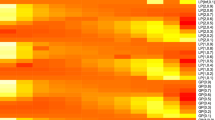Abstract
Non-compensatory aggregation rules are applied in a variety of problems such as voting theory, multi-criteria analysis, composite indicators, web ranking algorithms and so on. A major open problem is the fact that non-compensability implies the analytical cost of loosing all available information about intensity of preference, i.e. if some variables are measured on interval or ratio scales, they have to be treated as measured on an ordinal scale. Here this problem has been tackled in its most general formulation, that is when mixed measurement scales (interval, ratio and ordinal) are used and both stochastic and fuzzy uncertainties are present. Objectives of this article are first to present a comprehensive review of useful solutions already proposed in the literature and second to advance the state of the art mainly in the theoretical guarantee that weights have the meaning of importance coefficients and they can be summarized in a voting matrix. This is a key result for using non-compensatory Condorcet consistent rules. A proof on the probability of existence of ties in the voting matrix is also developed.
Similar content being viewed by others
References
Arrow K. J., Raynaud H. (1986) Social choice and multicriterion decision making. MIT Press, Cambridge
Baliamoune-Lutz, M. N. (2004). On the measurement of human well-being: Fuzzy set theory and Sen’s capability approach,“Working Papers UNU-WIDER Research Paper, World Institute for Development Economic Research (UNU-WIDER).
Bouyssou D. (1986) Some remarks on the notion of compensation in MCDM. European Journal of Operational Research 26: 150–160
Bouyssou D., Vansnick J. C. (1986) Noncompensatory and generalized noncompensatory preference structures. Theory and Decision 21: 251–266
Brans J. P., Mareschal B., Vincke Ph. (1986) How to select and how to rank projects. The PROMETHEE method. European Journal of Operational Research 24: 228–238
Cohen W., Schapire R., Singer Y. (1999) Learning to order things. Journal of Artificial Intelligence Research 10: 213–270
Condorcet, Marquis de (1785). Essai sur l’application de l’analyse à à la probabilité des décisions rendues à à la probabilité des voix. Paris: De l’ Imprimerie Royale.
Cowell F. A., Victoria-Feser M. P. (2002) Welfare rankings in the presence of contaminated data. Econometrica 70(3): 1221–1233
Davenport A., Kalagnanam J. (2004) A computational study of the Kemeny rule for preference aggregation. In: McGuinness D. L., Ferguson G. (Eds.), Proceedings of the Nineteenth National Conference on Artificial Intelligence, Sixteenth Conference on Innovative Applications of Artificial Intelligence. San Jose, AAAI Press/The MIT Press, California, Menlo Park
de Borda, J. C. (1784). Mémoire sur les élections au scrutin. Histoire de l’ Académie Royale des Sciences, Paris.
Dwork, C., Kumar, R., Naor, M., & Sivakumar, D. (2001). Rank aggregation methods for the web. In Proceedings 10th WWW, pp. 613–622.
Fishburn P. C. (1970) Utility theory with inexact preferences and degrees of preference. Synthese 21: 204–222
Fishburn P. C. (1973) Binary choice probabilities: On the varieties of stochastic transitivity. Journal of Mathematical psychology 10: 327–352
Kacprzyk, J., Roubens, M. (Eds.). (1988) Non-conventional preference relations in decision making. Springer, Heidelberg
Keeney R., Raiffa H. (1976) Decision with multiple objectives: preferences and value trade-offs. Wiley, New York
Luce R. D. (1956) Semiorders and a theory of utility discrimination. Econometrica 24: 178–191
Markowitz H. M. (1989) Mean-variance analysis in portfolio choice and capital markets. Basil-Blackwell, Oxford
Martel J. M., Zaras K. (1995) Stochastic dominance in multicriteria analysis under risk. Theory and Decision 35(1): 31–49
Matarazzo B., Munda G. (2001) New approaches for the comparison of L-R fuzzy numbers: a theoretical and operational analysis. Fuzzy Sets and Systems 118/3: 407–418
Moulin H. (1988) Axioms of co-operative decision making. Econometric Society Monographs. Cambridge University Press, Cambridge
Munda G., Nijkamp P., Rietveld P. (1993) Comparison of fuzzy sets: A new semantic distance. Ricerca Operativa 23(65): 5–25
Munda G. (1995) Multicriteria evaluation in a fuzzy environment. Physica, Contributions to Economics Series, Heidelberg
Munda G. (2004) Social multi-criteria evaluation (SMCE): Methodological foundations and operational consequences. European Journal of Operational Research 158(3): 662–677
Munda G., Nardo M. (2009) Non-compensatory/non-linear composite indicators for ranking countries: a defensible setting. Applied Economics 41: 1513–1523
Munda, G. (2011). Choosing aggregation rules for composite indicators, Social Indicators Research. doi:10.1007/s11205-011-9911-9.
OECD. (2003). Composite indicators of country performance: A critical assessment, DST/IND(2003)5, Paris.
Ozturk M., Tsoukias A., Vincke Ph. (2005) Preference modelling. In: Figueira J., Greco S., Ehrgott M. (Eds.), Multiple-criteria decision analysis. State of the art surveys. Springer International Series in Operations Research and Management Science, New York, pp 27–71
Podinovskii V. V. (1994) Criteria importance theory. Mathematical Social Sciences 27: 237–252
Poincaré H. (1935) La valeur de la science. Flammarion, Paris
Ragade R. K., Gupta M. M. (1977) Fuzzy set theory: Introduction. In: Gupta M. M., Saridis G.N., Gaines B. R. (Eds.), Fuzzy automata and decision processes. North-Holland, Amsterdam, pp 105–131
Roberts F. S. (1979) Measurement theory with applications to decision making, utility and the social sciences. Addison-Wesley, London
Roubens M., Vincke Ph. (1985) Preference modelling. Springer, Heidelberg
Roy B. (1978) ELECTRE III: Un algorithme de classement fondé sur une répresentation floue des prèferences en prèsence de critères multiples. Cahiers du Centre d’ Etudes de Recherche Opèrationnelle Paris 20(1): 3–24
Roy B. (1985) Méthodologie multicritere d’ aide à à la decision. Economica, Paris
Roy B. (1996) Multicriteria methodology for decision analysis. Kluwer, Dordrecht
Saltelli A., Tarantola S., Campolongo F., Ratto M. (2004) Sensitivity analysis in practice: A guide to assessing scientific models. Wiley, New York
Truchon, M. (1998). Figure skating and the theory of social choice. Cahier 9814 du Centre de Recherché en Economie et Finance Appliqués (CREFA).
Vansnick J. C. (1986) On the problem of weights in multiple criteria decision making (the non-compensatory approach). European Journal of Operational Research 24: 288–294
Vansnick J. C. (1990) Measurement theory and decision aid. In: Banae Costa C. A. (Ed.), Readings in multiple criteria decision aid. Springer, Berlin, pp 81–100
Author information
Authors and Affiliations
Corresponding author
Rights and permissions
About this article
Cite this article
Munda, G. Intensity of preference and related uncertainty in non-compensatory aggregation rules. Theory Decis 73, 649–669 (2012). https://doi.org/10.1007/s11238-012-9317-4
Published:
Issue Date:
DOI: https://doi.org/10.1007/s11238-012-9317-4




